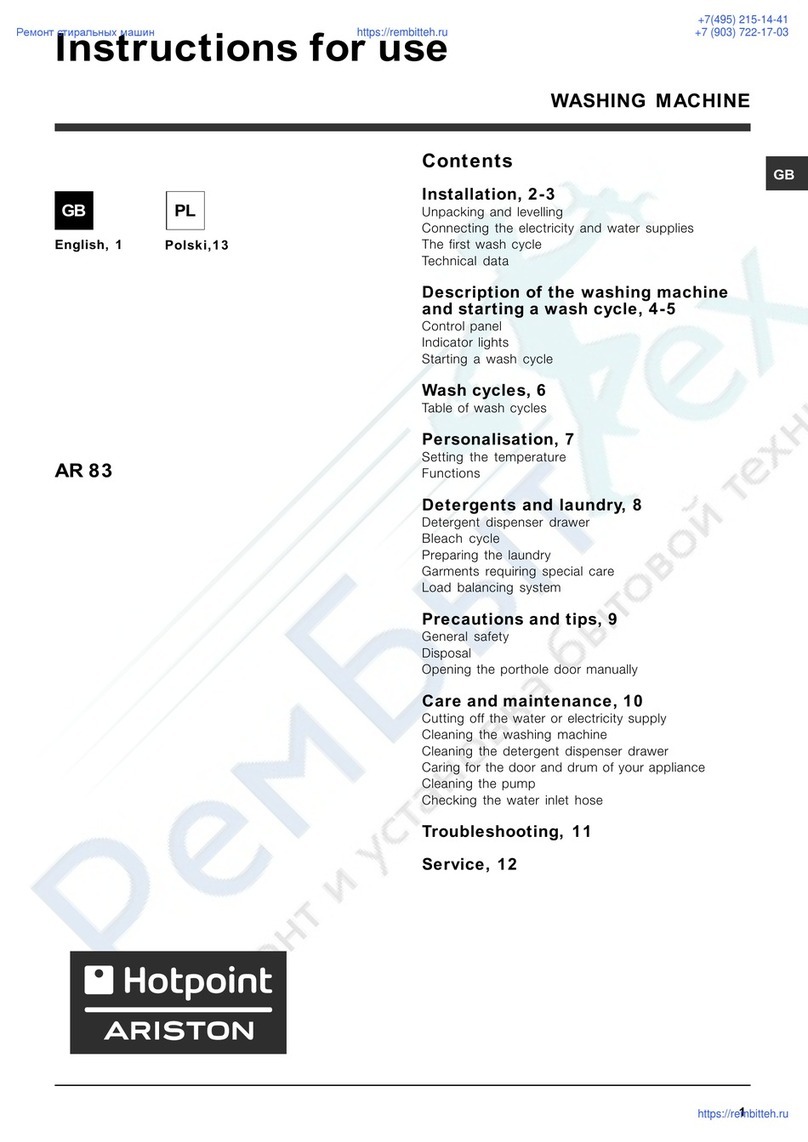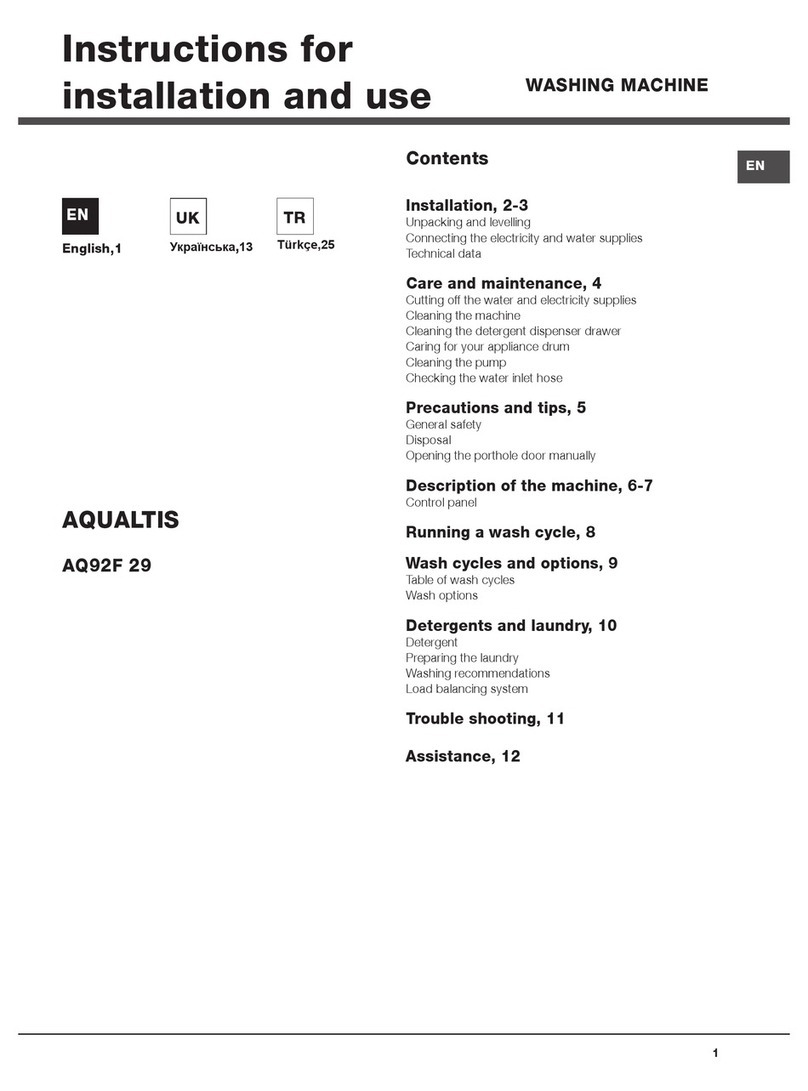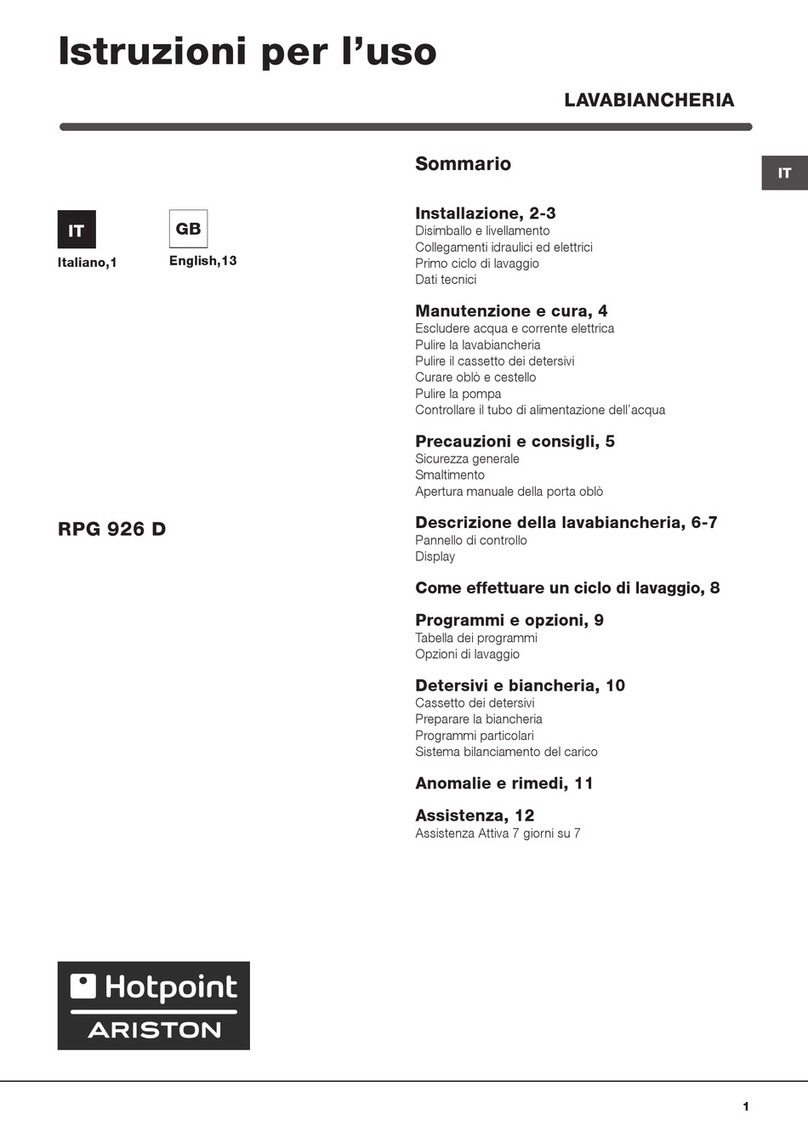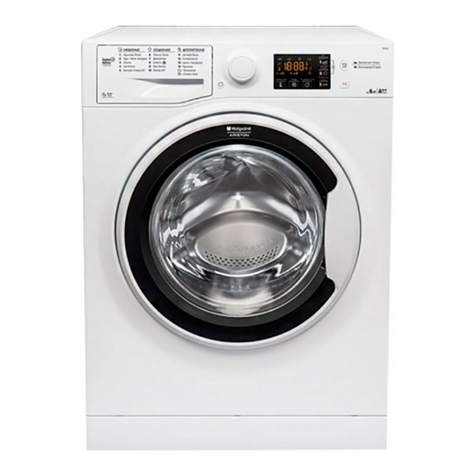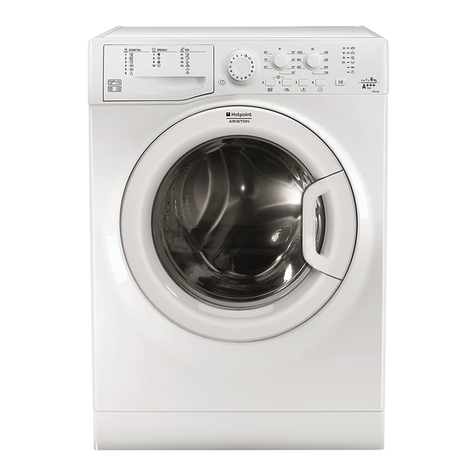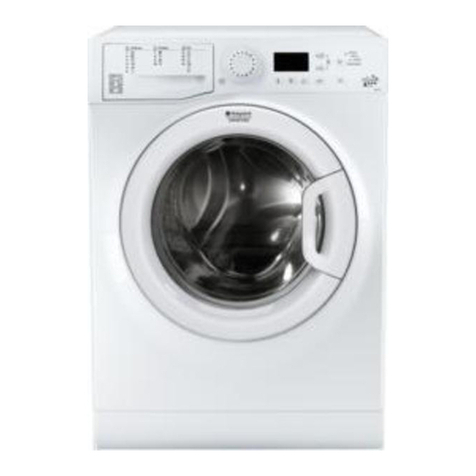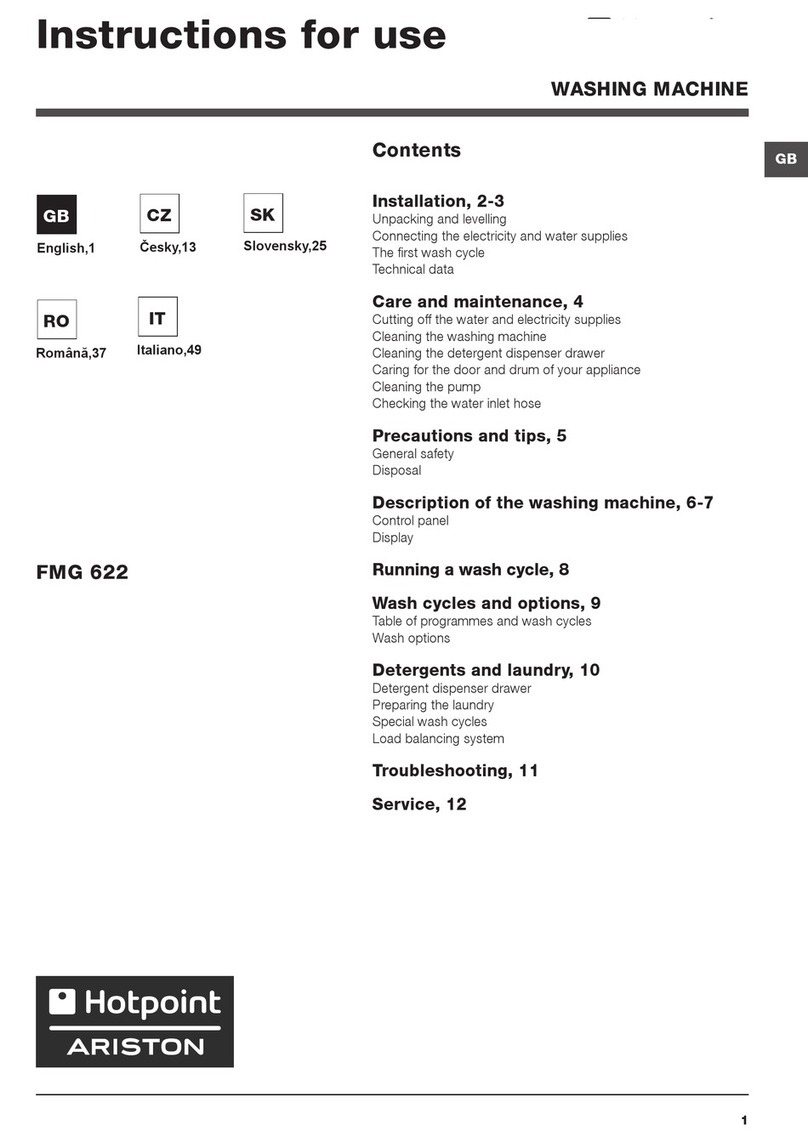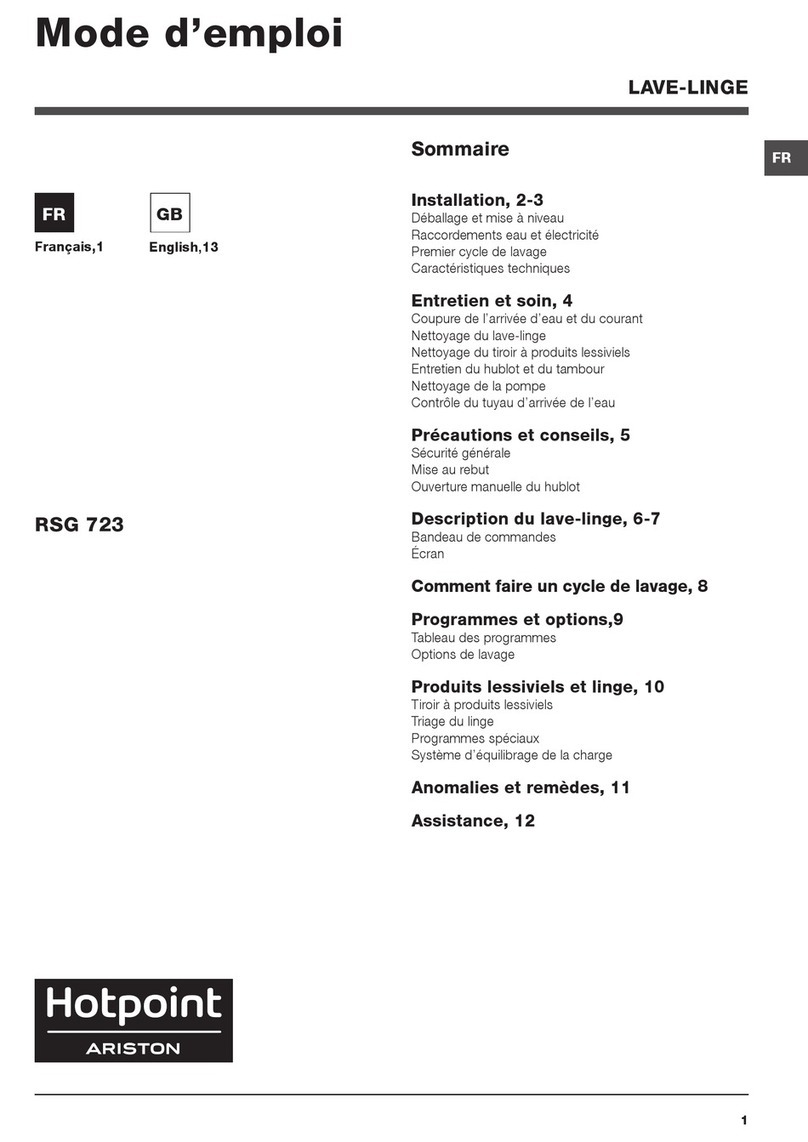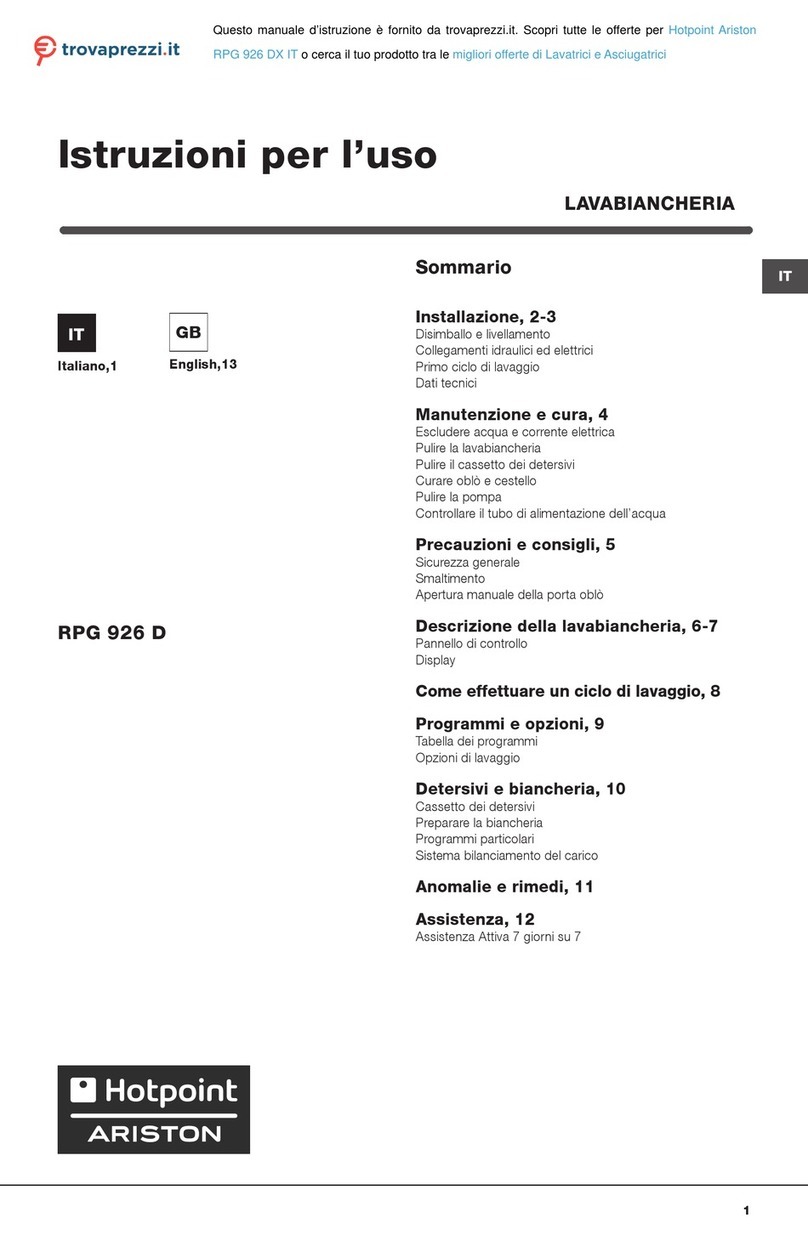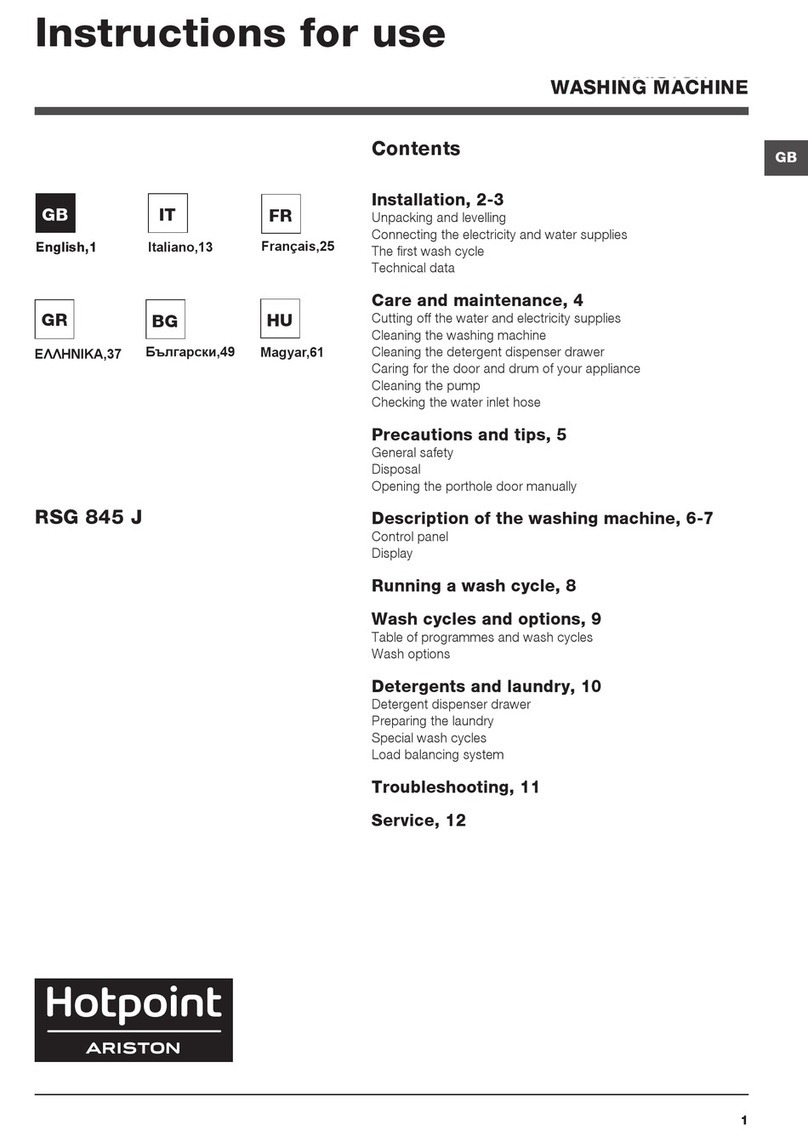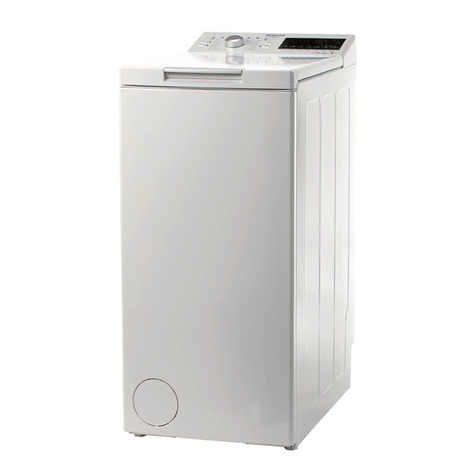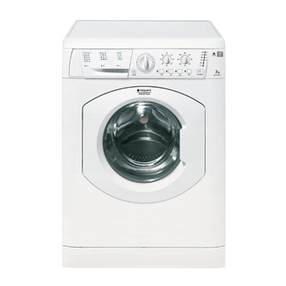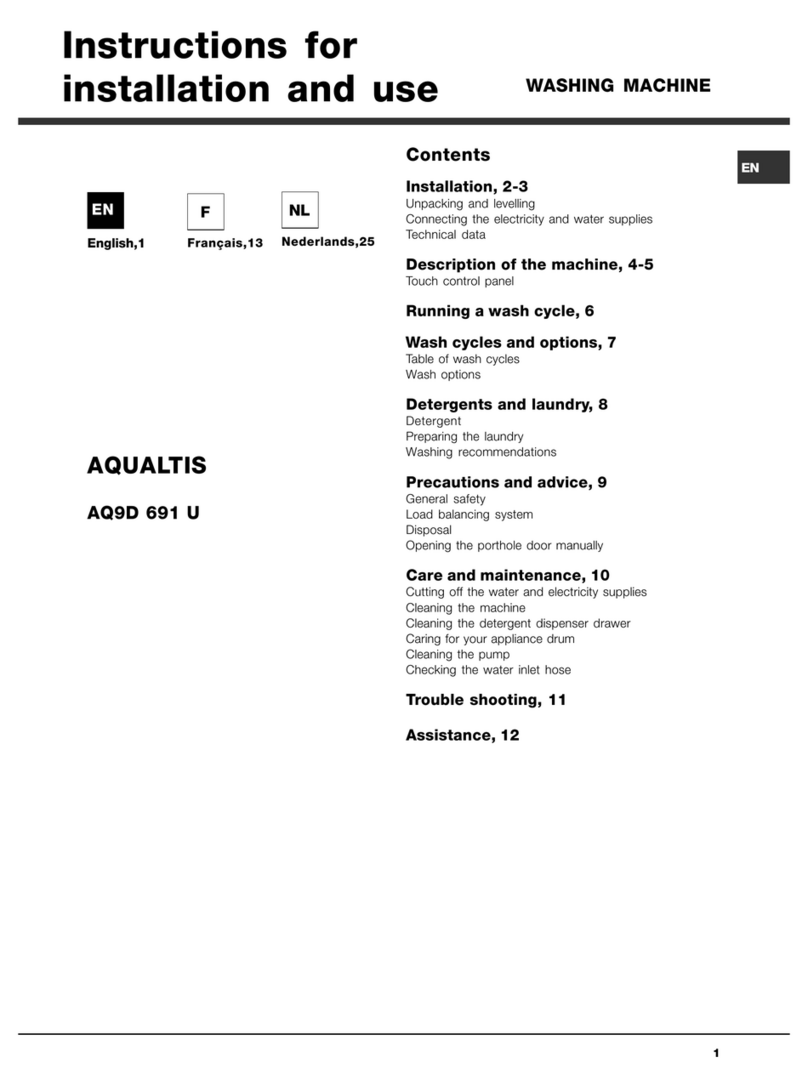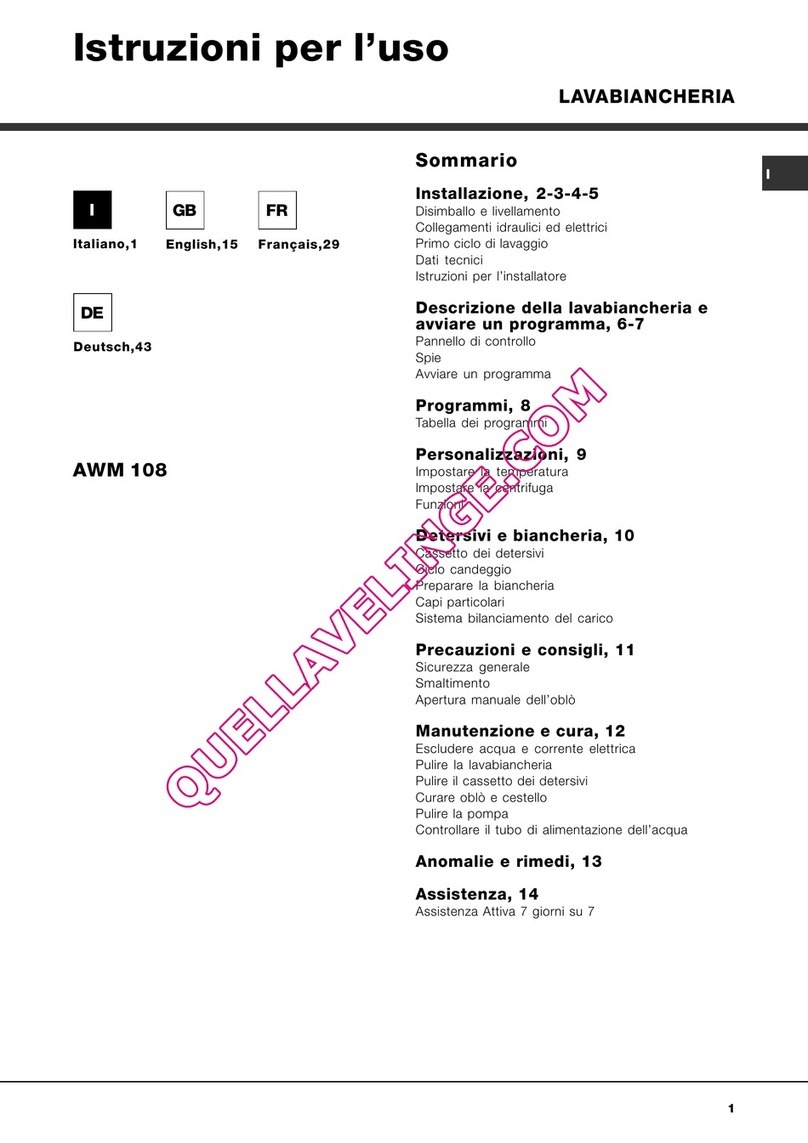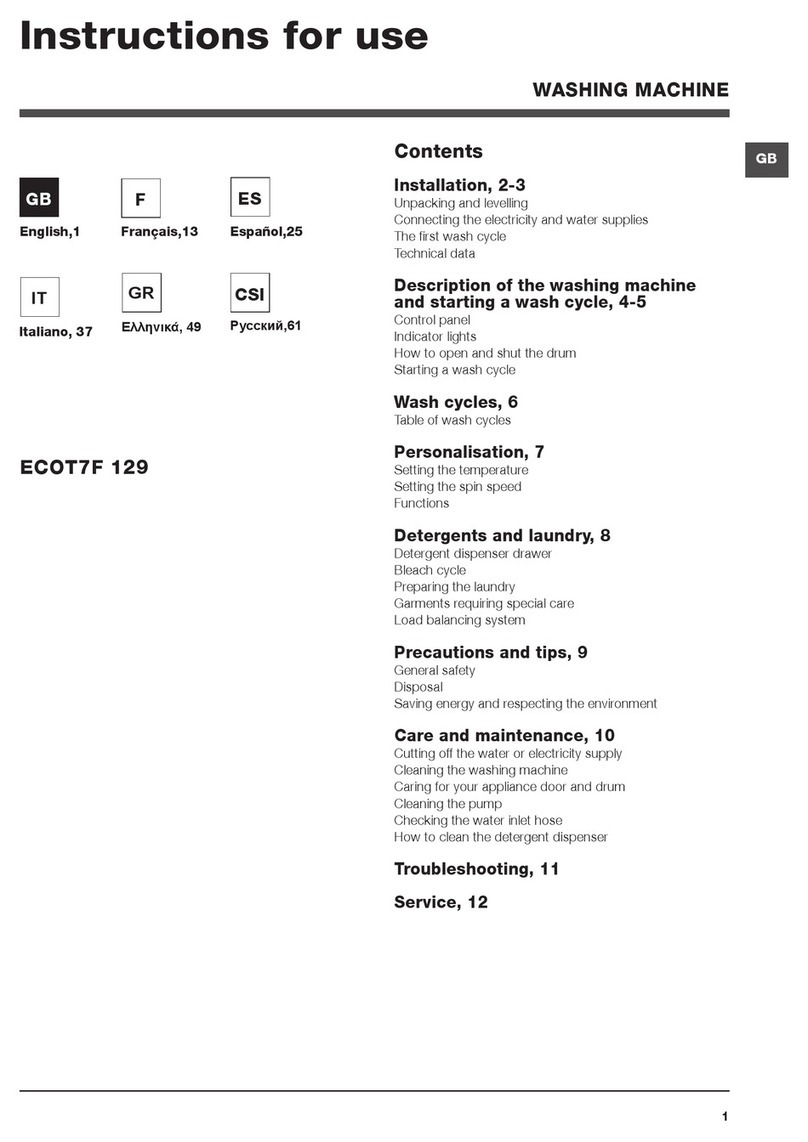EN
6
WARNING: before you use the washing machine for
the first time, run a wash cycle with detergent and no
laundry, using the 90° cottons cycle without pre-wash.
1. SWITCH THE MACHINE ON. Press the button.
All the indicator lights will illuminate for 1 second and
the text AQUALTIS will appear on the display; the
indicator light corresponding to the button will then
remain lit in a constant manner and the START/
PAUSE indicator light will flash.
2. SELECT THE PROGRAMME. Turn the
PR GRAMME KN B left or right, until the required
programme has been selected; the name of the
programme will appear on the display. A temperature
and spin speed is set for each programme; these may
be adjusted. The cycle duration will also appear on
the display.
3. LOAD THE LAUNDRY. pen the porthole door.
Load the laundry, making sure you do not exceed the
maximum load value indicated in the table of wash
cycles on the following page.
4. MEASURE OUT THE DETERGENT. Pull out the
detergent dispenser drawer and pour the detergent
into the relevant compartments as described in
Description of the machine.
5. CLOSE THE PORTHOLE DOOR.
6. CUSTOMISE THE WASH CYCLE. Use the
relevant buttons on the control panel:
Modif the temperature and/or spin speed.
The machine automatically displays the maximum
temperature and spin speed values set for the
selected cycle, or the most recently-used settings if
they are compatible with the selected cycle. The
temperature can be decreased by pressing the
button, until the cold wash FF setting is reached.
The spin speed may be progressively reduced by
pressing the button, until it is completely excluded
FF. If these buttons are pressed again, the
maximum values are restored.
Exception: if the ottons programme is selected, the
temperature can be increased up to a value of 90°C.
Setting a dela ed start.
To set a delayed start for the selected cycle, press the
corresponding button repeatedly until the required delay
period has been reached. During the setting procedure,
the delay period and the text "Starts in:" will be
displayed, along with the flashing symbol. After the
delayed start has been set, the symbol will remain
fixed on the display, which will also indicate the duration
of the selected cycle with the text "Ends in:" and the
cycle duration. Press the DELAYED START button just
once to display the delay time set previously.
After the countdown has begun, the display will show
the text "Starts in:" and the delay period. nce the set
delay time has elapsed, the machine will begin its cycle
and the display will show "Ends in:" and the time
remaining until the end of the cycle.
To remove the delayed start option, press the button
until the display shows the text FF; the symbol
will disappear.
Modif the c cle settings.
Press the button to activate the option; the name
of the option will then appear on the display and
the corresponding indicator light will illuminate.
Press the button again to deactivate the option;
the name of the option will then appear on the
display followed by the text FF, and the
corresponding indicator light will switch off.
If the selected option is not compatible with the
selected wash cycle, this incompatibility will be
signalled by the flashing of the indicator light and a
sound alert (3 beeps); the option will not be activated.
If the selected option is not compatible with another
option that has been selected previously, the indicator
light corresponding to the first option selected will flash
and only the second option will be activated; the
indicator light corresponding to the button will remain
lit in a constant manner.
The options may affect the recommended load value and/
or the duration of the cycle.
7. START THE PROGRAMME. Press the START/
PAUSE button. The corresponding indicator light
remains lit in a fixed manner and the porthole door
locks (the D R L CKED indicator light
illuminates). The icons corresponding to the wash
cycle phases will light up during the cycle to indicate
which phase is currently in progress.
To change a wash cycle once it has already started,
pause the washing machine by pressing the START/
PAUSE button; then select the desired cycle and
press the START/PAUSE button again.
To open the door during a wash cycle, press the
START/PAUSE button; if the D R L CKED
indicator light is switched off you may open the door.
Press the START/PAUSE button again to restart the
wash cycle from the point at which it was interrupted.
8. THE END OF THE WASH CYCLE. This is indicated
by the illuminated text END. The porthole door may
be opened immediately. If the START/PAUSE indicator
light is flashing, press the button to end the cycle.
pen the door, unload the laundry and switch off the
machine.
If you wish to cancel a cycle which has already begun,
press and hold the button until the cycle stops and
the machine switches off.
Bag for quilts, curtains and delicate garments
The Aqualtis washing machine makes it easier for you to
wash even the most valuable and delicate garments in
complete confidence thanks to the special bag which
protects the laundry (this is supplied with the machine).
We recommend that the bag is used every time you
wash quilts and padded items with an outer layer made
using synthetic material.
Running a wash c cle
